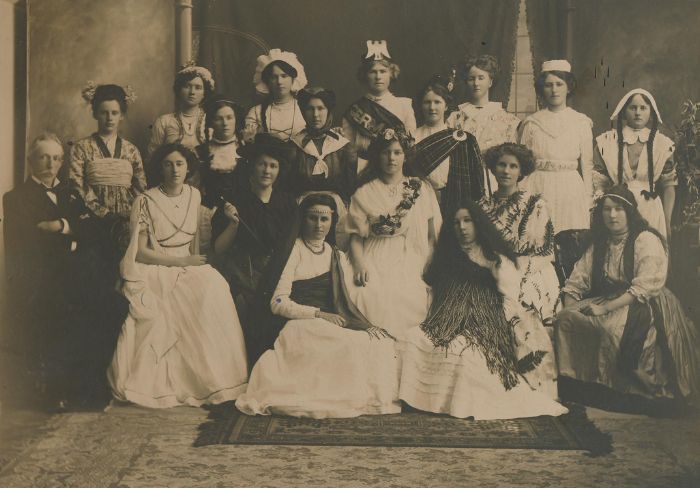During the late 19th and early 20th centuries, there was growing concern regarding the effect of alcohol on society.
Its consumption was considered the root cause of poverty, ill health, neglect and abuse of families, immorality, and social and economic instability.
As a result, a number of organisations evolved who advocated for the abstinence from, or total prohibition of alcohol, including the Good Templars.
The Good Templars
Founded in 1851, the first New Zealand contingent of the Good Templars international movement was inaugurated in Invercargill in 1872 and further lodges spread quickly to provincial centres.
The Good Templars included women among their members from the beginning, which may well have been one of the reasons for their success during the early 1900s.
The Ashburton branch, named The Dawn of Peace Lodge, began meeting at the Ashburton Road Board office on Moore Street in 1875, with 13 members. That number rapidly grew to 100 by its first anniversary.
The growth necessitated the group moving to a permanent lodge in the Triangle, the premises later becoming a well-known bicycle repair shop.
Devoted to their cause, members met regularly to improve legislation regarding the control or total prohibition of alcohol at a local, national and international level.
Their activities also included education, visiting speakers, fundraising for charitable causes and the encouragement of new members to commit to a journey to sobriety by signing a pledge.
The lodge also promoted a variety of social events to reinforce the reality that one could have fun without indulging in alcoholic beverages.
Concerts were a common feature, along with picnics and shared activities with nearby lodges.
They were also renowned for their support of those struggling with alcohol addiction.
An early report from the Ashburton Herald, dated April 5, 1878, attests to their success.
After an appearance before the magistrate on a charge of being drunk and disorderly, along with using obscene language, Mr W. H. Strange promised to join the Good Templars and never drink again.
As part of his verdict in an 1881 case, the Resident Magistrate himself recommended that George Sloan, who was drunk on the Hakatere Ashburton River bridge whilst in charge of horses, should endeavour to join the Good Templars.
One example of a stalwart templar was a local man in his 90s, Mr George William Andrews, who allegedly had never smoked, drank alcohol, shaved, or used bad language.
The Guardian reported, following his passing in April, 1940, that even in his advanced age he had continued to ride his bike around Ashburton, did not need to wear glasses and had “strong, firm handwriting”.
Victory over alcohol
The Templars, along with other local temperance organisations, experienced victory in 1902 when the Ashburton District voted to be “no licence”, or “dry”, by absolute majority at all polling booth locations.
This turn of events was primarily attributed to what the Guardian called the “splendid organisation of the no-licence contingent” which of course included the work of the Good Templars.
Ashburton remained “dry” until the electorate was abolished in 1927 and its territory assigned to two existing “wet” electorates.
Despite this disappointing development, the Templars continued to lobby for their cause.
A local Good Templars branch, the Star of the East Lodge, was still active in 1934, and the Wakanui branch continued well into the 1950s.
The international organisation continues to this day.
From the Museum Collection
Perhaps no other symbol from the era of temperance advocacy is more famous than the white ribbon of the Women’s Christian Temperance Union (W.C.T.U).
This is an example of a brooch or badge typically worn by someone who took the W.C.T.U pledge.
Such badges were pinned over the heart, to symbolise the unity and purpose of the organisation.
While the Good Templars were not as well-known as the W.C.T.U in their heyday, each organisation played an immensely important role in their respective communities to further a wider common goal.
The badge was donated to the Ashburton Museum & Historical Society in 1977.
Jacqueline Paterson





